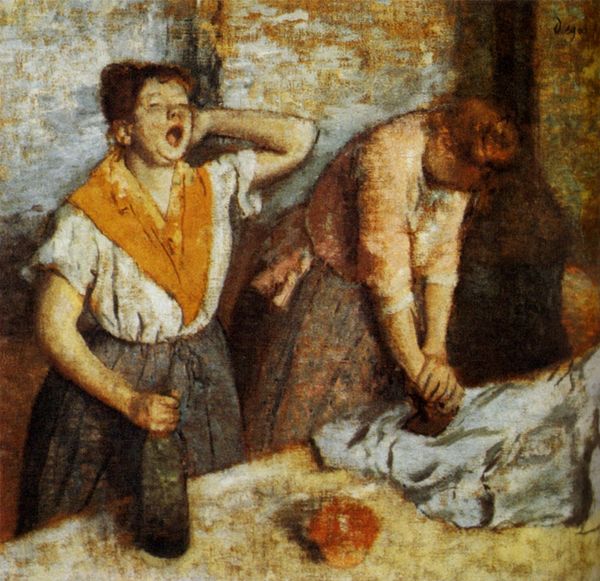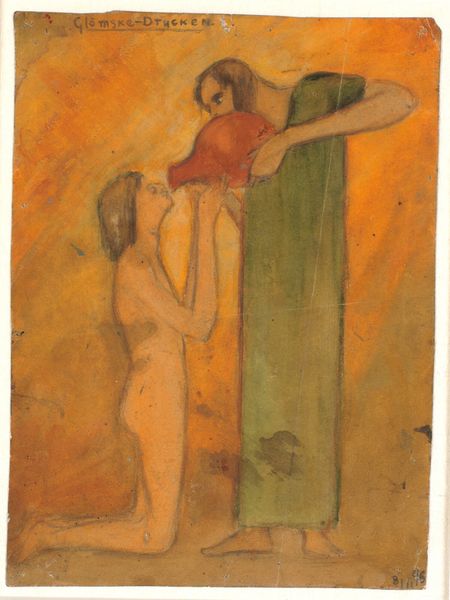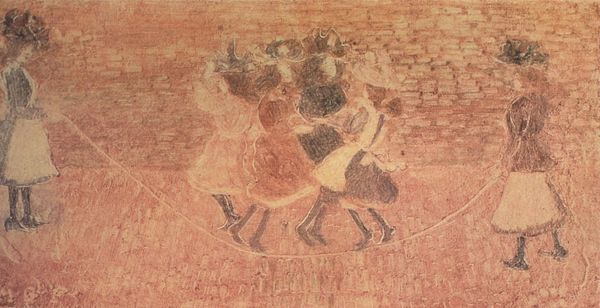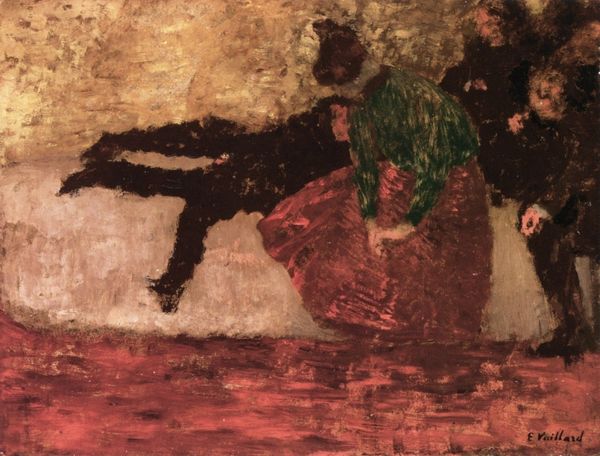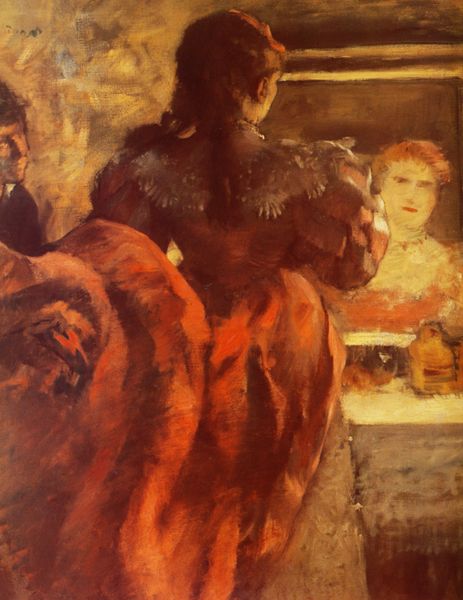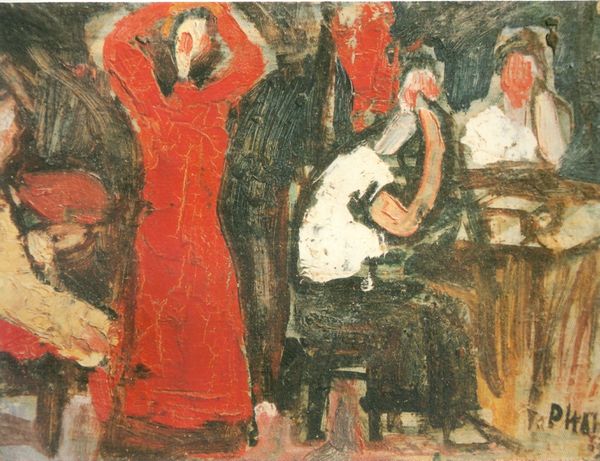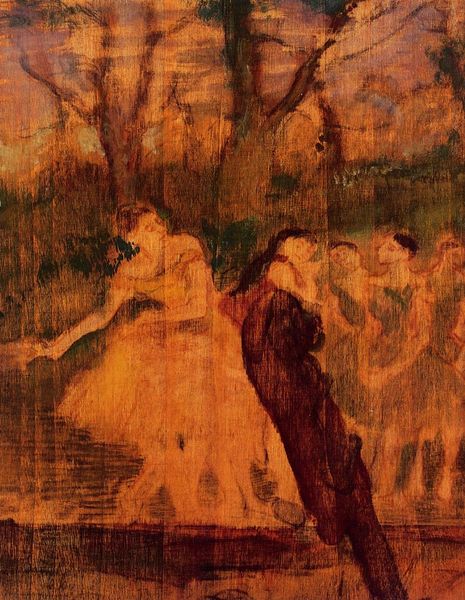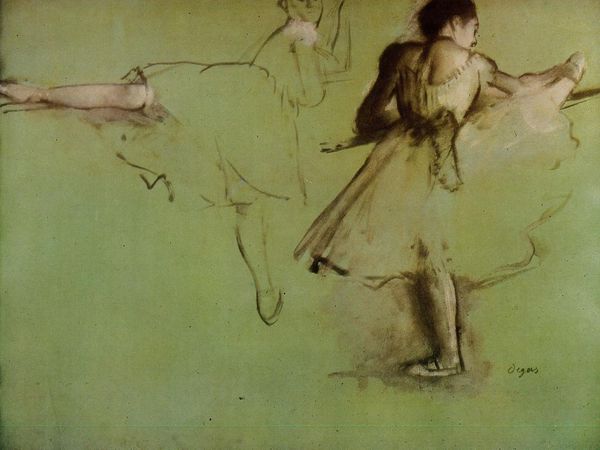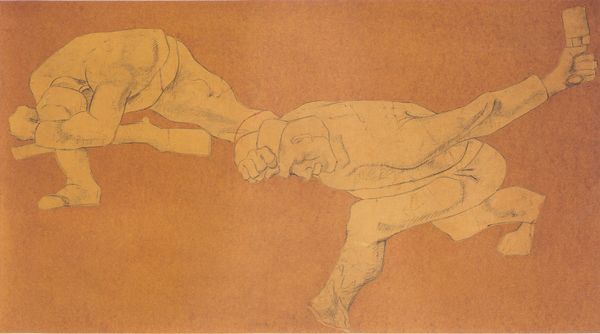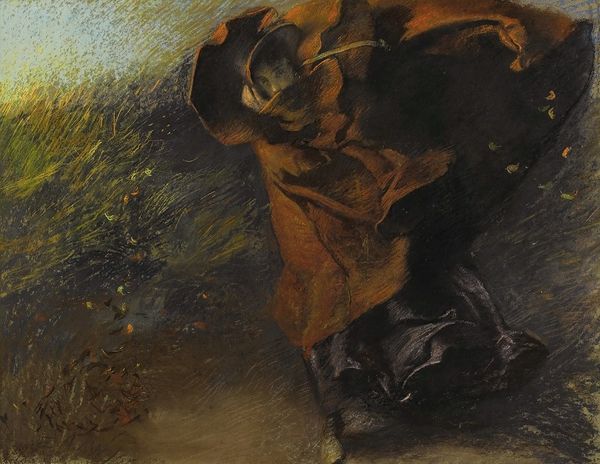
Dimensions: 124 x 150 cm
Copyright: Public domain
Curator: Alright, let's turn our attention to "Combing the Hair" painted by Edgar Degas around 1895, residing here at the National Gallery. I believe he mainly used pastels and oil for it. What is your immediate response? Editor: It feels intensely personal, almost voyeuristic. All that red…it’s like a furnace, evoking raw intimacy, domestic tension maybe? A secretive boudoir! It makes you wonder, who are these women, and what’s their story? Curator: Ah, you picked up on the red! This "red-room," you could call it. The Impressionists were rather fascinated by the effects of unusual lighting and skewed color, particularly in the creation of a distinct atmosphere. Consider that in iconography, the color red traditionally symbolizes passion, fire, sacrifice—energies intertwined here within this quiet, domestic scene. It does provoke us to consider that inner fire... Editor: Yes! I see what you mean about inner fire! But look at how deliberately posed the woman having her hair done is! Like a odalisque! She looks at once trapped but languid. She looks to me like she knows exactly what she's doing. Degas never misses the theater in our everyday. Curator: Quite! His genius was in capturing those seemingly candid moments. He was an observer par excellence. Notice the composition itself. It’s almost claustrophobic, intentionally denying us a clear perspective, further adding to this feeling of being an uninvited, surreptitious guest, while mirroring a societal boundary regarding 19th century bourgeois women. We witness their dressing rooms—the innermost sanctums of bourgeois femininity. Editor: What intrigues me most is how he manages to blend the classical with the everyday! He has infused a touch of sensuality to the classical nude. One could almost feel a psychological weight or expectation carried forward! This is a fascinating tableau of symbols playing out so quietly, it nearly whispers. Curator: Yes, he's a master of nuance! Thank you for guiding us toward those fascinating intimations within Degas’ work. His women always offer a story that escapes traditional painting. They are themselves...a mystery worth spending an afternoon to interpret. Editor: Agreed! And a good reminder that, sometimes, the most potent narratives lie in the unsaid. In what we’re almost not supposed to see.
Comments
No comments
Be the first to comment and join the conversation on the ultimate creative platform.
